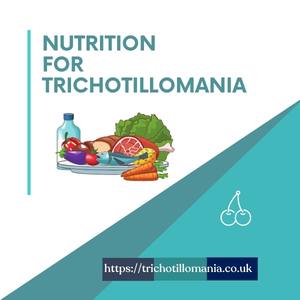Hair Pulling – A Root Analysis
With special thanks to Jeannette Johnson for her kind advice and attention.
Hair roots contain sebum. Sebum contains fatty acids and tryglycerides, and plays a role in some crucial body functions, such as hydration, inflammation, antioxidants, antimicrobial lipids, and pheromones. Sebum levels increase during puberty and excessive levels of sebum are often associated with skin problems, making it relevant to skin picking and hair pulling.
Why is this so relevant? You probably know that the body’s energy levels revolve around its production and use of insulin. a hormone which regulates fat and carbohydrate metabolism. It is insulin which prompts cells to absorb glucose from the blood. In fat cells, glucose it is stored as triglycerides .. see above paragraph for relevance of tryglycerides.
A normal skin yeast, Malassezia, may be overgrown in people with trichotillomania and dermatillomania. Overgrowth of malassezia is linked to higher levels of oleic acid in the sebum, which we think is caused by a delta 6 desaturase deficiency. According to Wikipedia, Malassezia is related to most skin disease in humans, certainly to eczema and acne. Malassezia growth depends upon the presence of fats, and sebum, which you will recall is present in hair roots.
relevant testing
Pickers and pullers may benefit from an essential fatty acid (EFA) analysis, particularly looking for elevated arachidonic acid and suppressed dihomo-gamma linoleic acid; These could contribute to a number of conditions such as irregular hormone production, insulin instability and prostaglandin problems.
ovulation
Our research at Trichotillomania Support UK reveals that many women experience worsening symptoms of trichotillomania during ovulation, which is also often delayed. it is very likely that a sebum/malassezia imbalance is the cause, as ovulation affects EFA conversion to prostaglandins. To balance prostaglandin-to-oestrogen ratio, a wild yam cream (progesterone cream) could be used on the skin prior to ovulation. Keep thorough records of your menstrual cycle and your pulling or picking. Apply the cream one or two days before ovulation, around the time when your oestrogen levels should begin to decline and progesterone levels increase.
Diet
Evening Primrose oil supplementation may help, because it is rich in GLA, which would be low in the case of delta 6 desaturase deficiency. Consider eating tahini or whole sesame seeds, as these may help prevent over-action of delta 5 desaturase.
To give the body what it needs to make delta 6 desaturase, a diet rich in magnesium, zinc, and vitamin B6 … are all found in sesame seeds! Avoid high-oleic acid oils on your skin, such as olive oil and jojoba. Coconut oil is also a high oleic acid but may be ok as it is also high in lauric acid. Take a good probiotic daily.
Skincare
Try a liquid probiotic scalp treatment, such as a goats milk kefir scalp rinse.
GOATS MILK SOAP/SHAMPOO
For those of you who enjoy home made solutions, search online for a goats milk soap or shampoo recipe. This old remedy for psoriasis/eczema is based on fact. Goats milk is high in lauric acid, which has potent anti-fungal properties: Use sesame oil instead of olive oil, and add some chamomile, and/or other anti-fungal herbs in the infusion. Cloves/clove essential oil also have an anaesthetic effect that might help with the itching or more subtle sensations that feed the urge to pull or pick. Use cloves with caution – and please don’t get the mixture in the eyes!
UNLESS OTHERWISE STATED, NONE OF OUR SKINCARE SUGGESTIONS SHOULD BE USED AROUND THE EYES.
Here is how we can help.




